#especially in canada and greenland
Explore tagged Tumblr posts
Text
i do thing it's mighty rich of that recent documentary on joe henderson to call him the "last arctic explorer" in relation to how he works his dogs when there are plenty of indigenous arctic mushers working their dogs in the traditional way without peddling inaccurate and often harmful breed mythology but that's just me.
#dogblr#dog mushing#sled dogs#like if you mean 'last arctic explorer' in the 'this white person is doing a warped version of an indigenous cultural touchstone' sure.#your quarterly reminder that joe henderson peddles inaccurate breed myths that talk about indigenous people as if they are past tense#and has had multiple controversies within the breed community#about his bad pedigree keeping and puppy health#anyways.#i'm just sick of joe acting like he's doing something lost to time when purposeful freight mushing is still done in indigenous communities#especially in canada and greenland#like oh wow i wonder why you a white person had more access to these sorts of dogs#is it because they weren't culled from your community?? is that why?
35 notes
·
View notes
Text

Sorry for complaining about Ben Shapiro in the big '25, but a few notes:
Interesting how in this incredibly delusional map he labels all of Canada as the 51st state and Greenland as Trumpland rather than the 52nd state.
It only proves these people do not even have an understanding of the world, even right on their doorstep. If MAGA knew the first thing about Canada, they would say that their provinces should become new states *plural* not one new state of 40+ million people.
And they imagine Greenland as a possible US territory (read: colony with no self governing powers) a la Puerto Rico rather than a state with an actual say in the union. Of course, it's colonialism either way but one is clearly worse.
And the Panama Canal was not stolen from America, America forced Panama to develop it so they could profit massively from a short route connecting the Pacific and Atlantic oceans where previously travelling around the Americas had been a nightmare, and then they stole control of that region of Panama because they wouldn't even allow Panamanians to control the canal they had laboured, suffered and died to build. You are owed nothing from Panama, in fact you owe them reparations.
I mean, of course MAGA is gonna say none of this is serious, and sure, the tweet is a joke, but the sentiment is increasingly serious. Especially with that man in the White House.
10 notes
·
View notes
Text
Warbler Showdown pt 3; Bracket 2, Poll 2


American Redstart (Setophaga ruticilla)
IUCN Rating: Least Concern
Range: quite extensive; breeds throughout most of Canada and the northern states, then migrates through the central and Eastern states before overwintering in the Caribbean, and from southern Mexico to northern South America (Ecuador to eastern Venezuela).
Habitat: moist, deciduous, second-growth woodlands with abundant shrubs, as well as thickets found in treefall gaps of old-growth forests. Sometimes classified as a "forest generalist", especially with their diverse overwinter habitats, with habitat depending more on the specific local of the population.
Subspecies: none
Yellow Warbler (Setophaga petechia)
IUCN Rating: Least Concern
Range: almost the entire continent of North America, save the locals of Nunavut, northern Quebec, and Greenland. Only migrates through the southern US states, and overwinters from southern Mexico all the way to Northern Brazil.
Habitat: breeds in wet, deciduous thicket, especially those with willows. While overwintering, uses a variety of wooded and scrubby habitats, as well as mangroves.
Subspecies: 9*; Mangrove Warbler could be split out as its own species
Image Sources: AMRE (Matt Felperin); YEWA (Tom Murray)
#nww showdown#yellow warbler#american redstart#setophaga#parulidae#passeriformes#polls#bird poll#animal poll
18 notes
·
View notes
Text

Navigating the next month
December 27, 2024
Robert B. Hubbell
Handling the news cycle over the next month will be a challenge. The American public is understandably turning away from legacy media in droves—both from exhaustion and disgust. See HuffPo, Americans Are Exhausted By Political News. TV Ratings And A New Poll Show They're Tuning Out.
The temptation to look away is understandable for both political and personal reasons. As Democrats honor the Constitution by facilitating the peaceful transition of power, the first president to interfere with that process will be inaugurated in little less than a month.
While Democrats follow the rules, Trump is ratcheting his obnoxious behavior to unplumbed depths of depravity and lunacy. His race to the bottom does not faze business leaders and major corporations flocking to Mar-a-Lago like gulls after a storm scavenging for scraps at the nearest landfill.
In short, it stinks.
My modest goal over the next several weeks is to help navigate through the unpleasant reality of the transition from the Biden to the Trump administration. We can’t look away completely, even though the urge to keep the odiferous news at arms-length is an act of self-preservation. But we have a democracy to defend and cannot do so unless we remain engaged and aware of the threats to the rule of law.
Out of respect for those of you who are gingerly re-entering the news bubble after the holidays (or the election), I offer a 60,000-foot summary in one paragraph below. Details follow. Jill and I are still hosting family through next week, so I will be briefer than usual. (You are welcome!)
The news from 60,000 feet
Trump is making reckless statements about US expansion into Canada, Iceland, and Panama. The 119th Congress will convene on January 3, 2025, and will elect a new Speaker (or not). A joint session of Congress will convene on January 6, 2025, at which time the President of the Senate (Vice President Kamala Harris) will announce the electoral votes by state. By operation of the Constitution and enabling statutes, if a candidate receives a majority of the electoral votes, that person will be elected as the next president upon the announcement of the vote totals by the President of the Senate. The president-elect will be inaugurated on January 20, 2025, at a taxpayer-funded ceremony—which will be followed by obscene galas underwritten to the tune of $150 million by cowardly businesses and CEOs eager to curry favor with a man none of them would hire.
Trump unleashes Christmas Day torrent of insults and threats
As has become a tradition with Trump, his Christmas Day messages quickly traversed the unhinged mental landscape from “Merry Christmas” to attacking the Radical Left Lunatics—a.k.a. “American citizens” whom he was elected to represent.
At one level, it is tedious and off-putting to recite Trump's crass statements on a day that most people associate with peace and hope. If you would like to read the details, they can be found in these articles: New York Magazine / Intelligencer, Trump Christmas Message Was Basically a Villain Monologue, and Pittsburgh Post-Gazette, President-elect Trump continues tradition of Christmas attacks, takes aim at ‘Radical Left Lunatics’.
At another level, Trump's ugly missives matter, especially when they involve threats to expand US territory into sovereign nations—like Canada, Greenland, and the Panama Canal. Yes, in case you missed it, Trump has directly or indirectly threatened to invade or absorb those three nations into the United States. See Rolling Stone, Trump Threatens to Take Over Canada, Panama Canal, Greenland in Christmas Day Message.
I know that many people have decided to “tune out” Trump's crazy statements—and each of the above falls well into the territory of delusion and detachment from reality. The problem is that there are sovereign nations on the receiving end of those reckless taunts—and their leaders cannot allow Trump's statements to go without response. The response, in turn, will provoke Trump to further lunacy. Wars have started over more trivial matters.
Charlie Angus, Canadian Member of Parliament in the House of Commons, was asked about Trump's threats to make Canada the 51st US state. Angus said,
[T]he message that I'm hearing from people across Canada is they're not afraid of [Trump] because they know you're a convicted felon. They know that all the people that you're bringing in to run your organization right now . . . are all grifters and thieves and thugs. We've got to look after our own interests right now. We will work with your country. We will work with our great neighbors. But, Donald, don't push us around.
In short, Trump's war of words directed at Canada, Panama, and Greenland is not harmless. It will provoke political backlash against the US in those countries. Although it is impossible to predict the outcome of the war of words, the likelihood that it will hurt the citizens of America, Canada, Panama, and Greenland is high.
Donald Trump is unfit to lead the United States—as his reckless comments make clear. That should be a leading story in every newspaper in America every day.
[Robert B. Hubbell]
11 notes
·
View notes
Text
Joyce Vance at Civil Discourse:
Happy Christmas Eve, and here’s your reminder that it’s not normal for an American president to talk about taking over territory that belongs to our allies. Greenland, the Panama Canal, and…Canada. This is, however it’s presented, speculative war talk. It’s invasion talk—how else does one country take over land held by another? We need look no further than Putin’s invasion of Ukraine to answer that. The countries Trump mentioned haven’t volunteered interest in joining the United States. And it’s hardly realistic to think they would. Perhaps Trump will drop it when he takes office. But it’s not funny, and it’s not a joke. It’s destabilizing, and destabilization is dangerous, especially in a fraught world. I’m sorry that tonight’s post isn’t one about visions of sugar plums, and I know we all want to be on holiday at the moment, but this is too important to look away from. The idea that there are people sitting around and acting like this is all normal is absolute madness.
“Expansion?” A rival to the Louisiana Purchase? None of these countries are interested in selling. The word they were looking for was invasion. That’s how one country takes over territory from another. In Germany in the 1900s, this need for “expansion” was called Lebensraum, literally, room to live in or elbow room. We all know what happened next. The German geographer Friedrich Ratzel came up with the term Lebensraum in the early 1900s. Under Hitler and the Third Reich, Lebensraum was used to justify “expansion” to the East. There was angry rhetoric about fulfilling destiny and the notion that those countries were filled with inferior people who the Germans should be permitted to elbow out—Jews and Slavs. They compared it to the American expansion to the West. We should not be surprised that the man who, according to his first wife Ivana, kept a copy of Hitler’s collected early speeches, My New Order, by his bed would go there.
[...] Some things are too important to ignore, even on Christmas Eve. Trump is not making friendly jokes with our neighbor Canada about becoming the 51st state. Greenland has its own indigenous people and a long-time relationship with Denmark. Panama’s conservative President José Raúl Mulino released a video reminding anyone who cared to tune in that “every square meter of the canal belongs to Panama and will continue to belong” to Panama. What Trump is doing is dangerous. On top of his lukewarm support for NATO, it could threaten post-World War II stability. Experience has shown that Trump will back down and abandon plans in the face of persistent opposition. The bully does not have the courage of conviction. We saw that when he distanced himself from Project 2025 after its exposure and extensive discussion in the news during the campaign. But he has realigned himself with its goals during the transition period, now that public opposition has dissipated. We saw it happen recently when Trump broke with Robert Kennedy Jr.’s views on polio vaccines after crazy nonsense about a Kennedy ally opposing them surfaced. Senator Mitch McConnell, a childhood polio survivor, made his opposition to that view plain as public outrage swelled. “Efforts to undermine public confidence in proven cures are not just uninformed—they’re dangerous,” McConnell said, a view he has unfortunately not shared publicly about a second Trump presidency. It was enough for Trump to back down.
CNN sanewashes Donald Trump’s delulu Lebensraum dreams of putting Canada, Greenland, and Panama Canal part of Panama under American rule by merely calling it “expansion”.
#Joyce Vance#CNN#Sanewashing#Canada#Panama#Panama Canal#Greenland#Trump Administration#CNN.com#Trump Administration II#Lebensraum#Annexation of Canada#Annexation of Greenland
5 notes
·
View notes
Text
Heather Cox Richardson 12.26.24
Heather Cox Richardson 12.26.24
It is starting to seem like the best way to interpret social media posts from President-elect Donald Trump is through the lens of professional wrestling. Never a true athletic competition—although it certainly required athletic training—until the 1980s, professional wrestling depended on “kayfabe,” the shared agreement among audience and actors that they would pretend the carefully constructed script and act were real.
But as Abraham Josephine Reisman explained in the New York Times last year, Vince and Linda McMahon pushed to move professional wrestling into entertainment to avoid health regulations and the taxes imposed on actual sporting events. That shift damaged the profession until in the mid-1990s, wrestlers and promoters began to mix the fake world of wrestling with reality, bringing real-life tensions to the ring in what might or might not have been real. “Suddenly,” Reisman wrote, “the fun of the match had everything to do with decoding it.”
Nothing was off-limits, and the more outrageous the storylines, the better. “[F]ans would give it their full attention because they couldn’t always figure out if what they were seeing was real or not.” This “neokayfabe” “rests on a slippery, ever-wobbling jumble of truths, half-truths, and outright falsehoods, all delivered with the utmost passion and commitment.”
Reisman concluded that producers and consumers of neokayfabe “tend to lose the ability to distinguish between what’s real and what isn’t.” In that, they echo the world identified by German-American historian and philosopher Hannah Arendt in her 1951 The Origins of Totalitarianism. “The ideal subject of totalitarian rule is not the convinced Nazi or the convinced Communist,” she wrote, “but people for whom the distinction between fact and fiction…and the distinction between true and false no longer exist.”
Yesterday, on Christmas and the first night of Hanukkah, Trump posted a “Merry Christmas to all” message that went on to claim falsely that Chinese soldiers are operating the Panama Canal, that President Joe Biden “has absolutely no idea what he’s doing.” The heart of his message, though, was that the U.S. should take over both the Panama Canal and Canada, and that Greenland, which is a self-governing territory of Denmark, “is needed by the United States for National Security purposes,” and that “the people of Greenland…want the U.S. to be there, and we will!”
Trump’s sudden pronouncements threatening three other countries—he has been quiet about Mexico since its president pushed back on his early threats—have media outlets scrambling to explain what he’s up to. They have explained that this might be a way for him to demonstrate that his “America First” ideology, which has always embraced isolation, will actually wield power against other countries; or suggested that his claim against Panama is part of a strategy to counter China; or pointed out that global warming has sparked competition to gain an advantage in the Arctic.
The new focus on threatening other countries, virtually never mentioned during the 2024 campaign, has driven out of the news Trump’s actual campaign promise. Trump ran on the promise that he would lower prices, especially of groceries. Yet in mid-December he suggested in an interview with Time magazine that he doesn’t really expect to lower prices. That promise seems to have been part of a performance to attract voters, abandoned now with a new performance that may or may not be real.
There is also little coverage of the larger implications of Trump’s threats to invade other countries. Central to the rules-based international order constructed in the decades after World War II is that countries must respect each other’s sovereignty. Between 1942 and 1945, forty-seven nations signed the Declaration by United Nations, the treaty that formalized the alliance that stood against the fascist Axis powers. That treaty declared the different countries would not sign separate peace agreements with Germany, Italy, or Japan.
They would work together to create a world based on the 1941 Atlantic Charter, which called for the territorial integrity of nations and the restoration of self-government to countries where it had been lost, and for global cooperation for economic and social progress. In 1945, delegates from fifty nations met in San Francisco to establish a permanent forum for international cooperation.
What emerged was the United Nations, whose charter states that the organization is designed “to maintain international peace and security” by working together to stop “acts of aggression or other breaches of the peace,” and to settle international disputes without resort to war. “The Organization is based on the principle of sovereign equality of all its Members,” the charter reads. “All members shall refrain…from the threat or use of force against the territorial integrity or political independence of any state, or in any other manner inconsistent with the Purposes of the United Nations,” it reads.
Russian president Vladimir Putin is eager to tear down the international rules-based order established by the United Nations and protected by organizations like the North Atlantic Treaty Organization (NATO). His invasion of neighboring countries—Georgia in 2008, then Ukraine in 2014 and again in 2022—demonstrates his desire to return the world to a time in which bigger countries could gobble up smaller ones, the ideology that after the invention of modern weaponry meant world wars.
On Christmas Day, Russia fired more than 70 missiles and more than 100 drones at Ukraine, targeting its energy infrastructure. The Ukrainian forces shot down more than 50 of the missiles, but the attack damaged power plants, cutting electricity to different regions. Just two years ago, Ukraine began to celebrate Christmas on December 25, following the Gregorian calendar rather than the less accurate Julian calendar still favored by the Russian Orthodox Church for religious holidays. Ukraine president Volodymyr Zelensky said the change would allow Ukrainians to “abandon the Russian heritage” of celebrating Christmas in January.
Also yesterday, an undersea power cable connecting Finland and Estonia failed, following a series of cuts to telecommunications cables in the Baltic Sea in November. Today, Finland seized an oil tanker it believes cut the cables yesterday, noting that the tanker may be part of Russia's “shadow fleet” that is waging a shadow campaign against NATO nations at the same time that it is evading sanctions against Russia.
In a joint statement today, the European Commission, which is the government of the European Union, “strongly condemn[ed]” the attacks on Europe’s critical infrastructure and said it would be proposing further sanctions to target the Russia’s shadow fleet, “which threatens security and the environment, while funding Russia’s war budget.” It emphasized Europe’s commitment to international cooperation.
Also yesterday, an Azerbaijan Airlines jet traveling from the Azerbaijan capital of Baku on its way to Chechnya crashed near Aktau, Kazakhstan, killing at least 38 of the 67 people on board. Nailia Bagirova and Gleb Stolyarov of Reuters reported today that a preliminary investigation by Azerbaijan officials suggests that Russian air defenses shot the plane down.
Newsweek’s Maya Mehrara reported that on Russian media last night, a propagandist close to Putin cheered on Trump’s demand for Greenland. "This is especially interesting because it drives a wedge between him and Europe, it undermines the world architecture, and opens up certain opportunities for our foreign policy," nationalist political scientist Sergey Mikheyev said.
Mikheyev supports Russia’s attempt to conquer Ukraine and has called for Russia to add to its “empire” not only Finland and Poland, but also Alaska, Hawaii, and California. Last night he explained that Trump’s approach would undermine the rules-based order that has shaped the world since World War II. If Trump "really wants to stop the third world war,” he said, “the way out is simple: dividing up the world into spheres of influence."
Mehrara noted that academic Stanislav Tkachenko said that Russia should "thank Donald Trump, who is teaching us a new diplomatic language.” He continued: "That is, to say it like it is. Maybe we won't carve up the world like an apple, but we can certainly outline the parts of the world where our interests cannot be questioned.”
But yesterday in Georgia’s capital, Tbilisi, Armenians and Azerbaijanis joined the protesters who are filling the streets to protest the government’s attempt to tie Georgia more closely to Putin’s Russia. They hope to turn Georgia toward Europe instead.
And President Joe Biden issued a statement concerning Russia’s Christmas bombardment of Ukraine to cut heat and electricity for Ukrainians in the dead of winter. “Let me be clear,” he said, “the Ukrainian people deserve to live in peace and safety, and the United States and the international community must continue to stand with Ukraine until it triumphs over Russia’s aggression.”
5 notes
·
View notes
Note
you mentioned putting a lot of thought into your asoiaf costume designs, would you elaborate on your inspirations & thought process? i am especially curious about your stark/northern designs
Of course!!! My northern designs are a whole mix of a bunch of different fashions but the main ones I try to use are Ukrainian, Inuit, and Eastern Woodlands Indigenous people. If I were to make a map, it would be Eastern and Northeastern Canada, some of Greenland, and Ukraine. The Starks are a bit complicated because I also use Irish inspiration through their mother, Cat. Sansa also dresses in more southron, court clothes that aren’t popular in either the North or the Riverlands. Some families also lean more towards one culture over others in terms of designs (I haven’t drawn them all be patient). Like one family may be completely Ukrainian inspired while another may be entirely Inuit inspired. There are also hints of Scandinavian fashion here and there, but those are more prevalent in the Iron Islands and beyond the wall.
#my asks#I should add the dress sansa is wearing in the piece with lady’s skull is northern!#it’s inspired by Iroquois regalia and Ukrainian dresses
21 notes
·
View notes
Text
Excerpt from this story from Mongabay Environmental News:
A NASA study analyzed the future action of six climate variables in all the world’s regions — air temperature, precipitation, relative humidity, short- and long wave solar radiation and wind speed — if Earth’s average temperature reaches 2° Celsius (3.6° Fahrenheit) above preindustrial levels, which could occur by 2040 if emissions keep rising at current rates.
The authors used advanced statistical techniques to downscale climate models at a resolution eight times greater than most previous models. This allows for identification of climate variations on a daily basis across the world, something essential since climate impacts unfold gradually, rather than as upheavals.
The study found that the Amazon will be the area with the greatest reduction in relative humidity. An analysis by the Brazilian space agency INPE showed that some parts of this rainforest biome have already reached maximum temperatures of more than 3°C (5.4°F) over 1960 levels.
Regardless of warnings from science and Indigenous peoples of the existential threat posed by climate change, the world’s largest fossil fuel producers, largely with government consent, plan to further expand fossil fuel exploration, says a U.N. report. That’s despite a COP28 climate summit deal “transitioning away from fossil fuels.”
In view of the current nonstop rise in greenhouse gas emissions responsible for intensifying climate change, NASA researchers this year posed two key questions: When will the planet’s temperature likely reach an annual average of 2° Celsius (3.6° Fahrenheit) above preindustrial levels? And what will the global climate look like in great detail all over the world at that temperature?
Disturbingly, their findings indicate that a 2°C increase could be reached between 2041 and 2044 (under higher and lower emission scenarios, respectively) in comparison with the preindustrial period (1850-1900). The planet is currently at 1.15°C (2.07°F) above 19th century levels, with most of this warming occurring since 1975.
A rise above 2°C could put Earth on track for catastrophic climate change impacts, according to the 2023 report by the U.N. Intergovernmental Panel on Climate Change.
To investigate the potential multiple effects of a 2°C planet, scientists at the NASA Earth eXchange analyzed the projections of 35 of the world’s leading climate models with a very high resolution that gives results for areas of just 25 square kilometers (9.6 square miles). Many climate models currently use a far coarser resolution of 200 km2 (77 mi2). NEX fine-scaling allowed for estimated climate impact projections on both a local and regional scale, and even on a daily basis.
“If merged into a monthly average, a few days projected to be dangerously hot and humid could get lost in the numbers, concealing the risk for human lives,” explained study lead author Taejin Park, a researcher at NASA’s Ames Research Center. “Finer-scale information can help identify variations in projected climate change that may be overlooked, so leading to significant impacts on planning and decision-making.”

In the 2040s, global mean near-surface air temperature over land is projected to increase 2.33-2.79°C (4.2-5°F), compared with the baseline period 1950–79. Greenland, Alaska, Canada, Northern Europe and Asia are projected to reach above a 3°C (5.4°F) increase in annual temperature. Image courtesy of NASA/Taejin Park.

If NASA’s projections are correct, a precipitation increase will occur over much of the northern hemisphere, especially in southeastern Greenland, but also in western and eastern Africa and South Asia, among other places. The Amazon Basin, on the other hand, will see a major decrease in precipitation. Dry regions such as Southern Africa, the North American Southwest and the Mediterranean also could see a precipitation decline. Image courtesy of NASA/Taejin Park.

After 2040, most regions of the world are expected to have more days with extreme heat stress, with heat especially pronounced in the Amazon, Central and Eastern North America, the Mediterranean and Eastern and Northern Asia. Heat stress can be devastating to wildlife, plants and of course, people. Image courtesy of NASA/Taejin Park.

Under a moderate emission scenario, Western and Central North America, the Amazon, the Mediterranean and South Africa will be at higher risk of fires in the 2040s, compared with 1950-79. Image courtesy of NASA/Taejin Park.
6 notes
·
View notes
Text

"Francis Fukuyama: we are entering a new, dangerous period of history." Fukuyama has changed his mind, the end of history is not imminent - instead, he has heaped on new prophecies that the West is in for a host of problems.
"Expect general destabilization. Trump's rule will give confidence to populist parties, especially in France and Germany. We are already seeing defections in Eastern Europe: Slovak Prime Minister Robert Fitzo is already in Putin's camp. I fear this phenomenon will intensify. There are geopolitical implications as well.
✔️ I am struck by what has happened recently. Trump has suddenly started calling for US expansionism. He has announced the takeover of Greenland, the Panama Canal and even Canada. Probably two-thirds of these can be considered fantasies that will never come true. But they still have a major impact on international relations.
✔️ One of the basic rules of the old system was that you can't just take away someone else's territory. That's why the attack on Ukraine in 2022 was such a shock. And now the US is saying "we want this or that territory and we can use military force" . This completely undermines the arguments we make against Putin. And Putin is taking advantage of that. He has suggested that Russia and the US should divide Greenland between them because no one cares about borders and sovereignty anymore.
✔️ Let's think about China. Their claim to Taiwan is certainly stronger than America's claim to Greenland. If the Chinese decide that the American president agrees that great powers militarily intimidate smaller countries, why not try to get Taiwan back? I think we are indeed entering a dangerous period.
✔️ The war in Ukraine is entering its fourth year. And it doesn't look good for the Ukrainians. Let's see what kind of deal Trump will make , and whether he will negotiate at all.
✔️ The US will surely be less reliable than before. Never before have we had a president who questioned the need for NATO. However, I think that in a practical sense Trump will have trouble implementing this idea. There is one thing he definitely doesn't want - a bad image. That's why Trump won't give up on Ukraine right away. He will approach big changes, such as cutting off aid to Ukraine, slowly. But that doesn't change the fact that he has already weakened NATO.
✔️ A common problem in the U.S. and Europe is that the rules provide for lengthy and expensive legal procedures to determine whether a person is eligible for asylum. In practice, such proceedings are impossible for large numbers of people. Migrants have realized that it is sufficient to request refugee status and thus trigger procedures that provide them with legal protection.
✔️ The idea that Europe can create a separate military entity without the US doesn't make sense. I don't think it's possible.
✔️ I think in 2016 Trump didn't believe he was going to win, and when he took office he didn't have people ready. He had to rely on the party. For the first 3 years he was very unhappy with his cabinet that was disloyal to him. It was only in the fourth year of his term that he started to allocate his people. This time, the most important criteria for nominations will be loyalty to Donald Trump. His candidates so far are already showing how radical he will be.
✔️ Musk is like an unguided missile that sows destruction wherever it appears. And at the same time, his character makes a pretty strong argument that democracies should not allow anyone to accumulate so much money. Billionaires used to be businessmen. Now this guy wants to rule the world. I don't know what he's going to do. Obviously, Musk is already breaking away from Trump himself and his hard-line supporters."
#blacklivesmatter#blackvotersmatters#donald trump#joe biden#naacp#blackmediamatters#blackvotersmatter#news#ados#youtube
3 notes
·
View notes
Text
climate change blackpill megapost
there are several climate tipping points identified in the united nations intergovernmental panel on climate change sixth assessment report (chapter 3, specifically). tipping points refer to critical thresholds in a system that, when exceeded, can lead to a significant change in the state of the system, often with an understanding that the change is irreversible. they are:
the greenland ice sheet
the west antarctic ice sheet
the atlantic meridional overturning current
monsoon systems
el niño-southern oscillation
tropical rainforests
northern boreal forests
thawing permafrost
extreme heat
current (2022) global warming of ~1.1°C above preindustrial temperatures already lies within the lower end of some tipping point uncertainty ranges. several tipping points may be triggered in the paris agreement range of 1.5 to <2°C global warming, with many more likely at the 2 to 3°C of warming expected on current policy trajectories.
greenland's ice sheet is in disequilibrium and we are committed to 2-3 meters of sea level rise from its melt alone in the next 200 years.
greenland's ice sheets have been melting twice as fast in the last twenty years as they were during the previous century.
rapid increase in the rate of melting of the west antarctic ice sheet is unavoidable.
the west antarctic ice sheet is retreating twice as fast as previously predicted
because of widespread seawater intrusion beneath the grounded ice of the thwaites glacier.
the west antarctic ice sheet will raise sea levels by four meters when it melts.
this is causing the atlantic meridional overturning current to collapse.
the gulf stream (aka amoc) is weakening. 99% confidence. measured volume through the florida straits has declined by 4% in the past 40 years
the gulf stream will collapse between 2025 and 2095. 95% confidence.
the north atlantic is four standard deviations above its historic temperatures.
when the amoc collapses, the arctic sea-ice pack will extend down to 50°n. the vast expansion of the northern hemispheric sea-ice pack amplifies further northern hemispheric cooling via the ice-albedo feedback.
a collapse of the atlantic meridional overturning circulation would have substantial impacts on global precipitation patterns, especially in the vulnerable tropical monsoon regions in west africa, east asia, and india where they will experience shorter wet seasons and longer dry seasons with an overall decrease in precipitation
although recent studies indicate that the amazon will experience net benefit from the collapse of the amoc with cooler temperatures and increased rainfall
increased el niño intensity will increase the frequency and severity of droughts in the amazon rainforest.
even if we were able to stabilize global mean temperature at 1.5º C, el niño intensity will continue to increase for a century
and the amazon rainforest is currently in the worst drought on record, which may indicate it has passed its threshold to maintain its own wet climate.
while widespread and persistent warming of permafrost has been observed in polar regions and at high elevations since about 1980, the highest permafrost temperatures in the instrumental record were recorded in 2018–2019 (data from 2019-2020)
as of 2019 the southern extent of permafrost had receded northwards by 30 to 80km
soil fires in the canadian arctic are burning the peat underground and melting the permafrost. stat from the study 70% of recorded area of arctic peat affected by burning over the past forty years has occurred in the last eight and 30% of it was in 2020 alone.
nasa finds that tundra releases plumes of methane in the wake of wildfires.
in 2023 eight times more land burned in canada than average.
russian siberia experienced a similarly massive fire season in 2021.
a methane source we weren’t expecting was warmer, wetter conditions to increase organic decomposition in tropical wetlands which is releasing ever increasing amounts of methane.
we have been experiencing exponential rise in atmospheric methane since 2006. historical data indicates that we may have entered into an ice age termination event fueled by these methane releases.
we have been over 1.5º C above pre-industrial temperatures since the beginning of 2023.
this may be because of the extreme el niño conditions of the 2023-24 cycle, but breaches of 1.5°C for a month or a year are early signs of getting perilously close to exceeding the long-term limit
and the world meteorological organization expects us to permanently break 1.5º C of warming from pre-industrial levels within the next five years.
the united nations environmental programme (unep) emissions gap report found that current fossil fuel extraction commitments leave no credible path to keeping warming below 1.5º C. based on current policies we will experience 2.8ºC of warming by 2100. even if all current pledges were implemented and followed through with (which they never have been), we will only be able to limit that to 2.4-2.6ºC of warming.
#this isn't even touching on the anthropological or ecological impacts#just the physics of the predicament#climate change#climate crisis#climate emergency#ipcc#extinction rebellion#last generation#just stop oil#it's the end of the world as we know it
11 notes
·
View notes
Text
ROBERT REICH
FEB 3

Friends,
Understand this: The reason Trump has raised tariffs on Canada and Mexico is not to have more bargaining leverage to get better deals for the United States from Canada or from Mexico.
Hours before the Canadian tariffs went into effect, Trump was asked if there was anything Canada could do to stop them. “We’re not looking for a concession,” Trump said, speaking to reporters in the Oval Office on Friday afternoon. “We’ll just see what happens, we’ll see what happens.”
The real reason Trump has raised tariffs on Canada and Mexico is to show the world that he’s willing to harm (smaller) economies even at the cost of harming America’s (very large) economy.
The point is the show — so the world knows it’s dealing with someone who’s willing to mete out big punishments. Trump increases his power by demonstrating he has the power and is willing to use it.
The same with deporting, say, Colombians or Brazilians in military planes, handcuffed and shackled. If, say, Colombia or Brazil complains about their treatment, so much the better. Trump says, without any basis in fact, that they’re criminals. Then he threaten tariffs. If Colombia backs down, Trump has once again demonstrated his power.
Why did Trump stop foreign aid? Not because it’s wasteful. In fact, it helps stabilize the world and reduces the spread of communicable diseases. The real reason Trump stopped foreign aid is he wants to show he can.
Why is he disregarding (or threatening to tear up) treaties and agreements (the Paris Agreement, NATO, whatever)? Not because such treaties and agreements are bad for America. To the contrary, they’re in America’s best interest.
The real reason Trump is tearing up treaties is they tie Trump’s hands and thereby limit his discretion to mete out punishments and rewards.
Don’t think of these as individual “policies.” Think of them together as shows of Trump’s strength.
If Canada or Mexico retaliates, he’ll retaliate against them with even bigger tariffs.
If some senior Republican members of Congress object that he’s stepping on congressional prerogatives, so what? It’s an opportunity to show them who’s boss.
If a federal court temporarily stops him, so what? He’ll go right on doing it and demonstrate that the courts are powerless to stop him.
Look behind what’s happening and you’ll see that Trump is employing two techniques to gain more power than any U.S. president has ever wielded.
The first is to demonstrate that he can mete out huge punishments and rewards.
It doesn’t matter if the punishment or reward is justified. A 25 percent tariff on Canada? Hello?
It’s a show of strength.
If prices skyrocket in America for oil and lumber from Canada or for fruits and vegetables from Mexico, no problem for Trump. Most Americans don’t understand how tariffs work, anyway. Trump will blame Canada and Mexico. And then threaten them with, say, 50 percent tariffs. Kabam!
Which brings us to the second technique Trump is using to expand his power: unpredictability.
What makes an abusive parent or spouse, or an abusive dictator, or Tump, especially terrifying? They’re unpredictable. They lash out in ways that are hard to anticipate.
So, anyone potentially affected by their actions gives them extra-wide berth — vast amounts of obedience in advance.
Trump keeps everyone guessing.
He demands that Denmark sell Greenland to the United States. He chews out the CEO of the Bank of America at Davos for allegedly discriminating against conservatives. He fires independent inspectors general. He purges the Department of Justice of career civil servants who prosecuted cases against him. He attacks birthright citizenship.
What’s next? Who knows? That’s the whole point.
How else to explain the bizarre deference — cowardice — we’re seeing among CEOs, the media, almost all Republican and even some Democratic lawmakers? Presumably, they’re all saying to themselves: “He could do anything, so let’s be especially careful.”
Musk, Bezos, and Zuckerberg kiss his derriere. Bill Gates is “frankly impressed” with him. Jamie Dimon, chief of JPMorganChase, decides he’s “not all wrong.”
Nearly 50 House Democrats support a bill targeting undocumented immigrants charged with nonviolent crimes for deportation. What?
In 1517, Niccolò Machiavelli argued that sometimes it is “a very wise thing to simulate madness” (Discourses on Livy, book 3, chapter 2). In his 1962 book, Thinking About the Unthinkable, futurist Herman Kahn argued that to “look a little crazy” might be an effective way to induce an adversary to stand down.
The “rule of law” is all about predictability. We need predictability to be free.
But much of what Trump is doing is either illegal,31sd yet will take months or years before the courts decide so, or is in the gray area of “probably illegal but untested by the courts.” Which suits his strategy just fine.
The media calls it “chaos,” which is how various people and institutions experience it.
The practical consequence is that an increasing number of so-called “leaders” — in the private, public, and nonprofit sectors, and around the world — are telling their boards, overseers, trustees, or legislatures: “We have to give Trump whatever he wants and even try to anticipate his wants, because who knows how he’ll react if we don’t?”
Together, these two techniques — big demonstrations of discretionary power to reward or punish, and wild uncertainty about when or how he’ll do so — expand Trump’s power beyond the point any president has ever pushed power.
Which brings us to the obvious question: Why is Trump so obsessed with enlarging his power?
Hint: It’s not about improving the well-being of average Americans and certainly not about making America great again (whatever that means).
Yes, he’s a malignant narcissist and sadist with an insatiable lust for power who gets pleasure out of making others squirm.
But there’s something else.
The bigger his demonstrable power and the more unpredictably he wields it, the greater his ability to trade some of that power with people with huge amounts of wealth, both in the United States and elsewhere.
I’m referring to America’s billionaires, such as Elon Musk and the 13 other billionaires Trump has installed in his regime, as well as the 744 other billionaires in America, and the 9,850 Americans with at least $100 million in net worth.
Together, these individuals have a huge storehouse of wealth. Many are willing to trade some of it to gain even more, and to tie down what they have more securely.
They give Trump (and his family) business deals, information, campaign money, and positive PR (propaganda). In return, he gives them tax cuts, regulatory rollbacks, and suspensions of antitrust.
I’m also referring to oligarchs in Russia, China, and Saudi Arabia. He gives them special trade deals, energy deals, intelligence deals, access to global deposits of riches; or he threatens to hold them back. In return, they give him (and his family) business deals, information, support in political campaigns, and more covert propaganda.
This is Trump’s game: Huge demonstrations of power that’s wielded unpredictably. They’re eliciting extraordinary deals for Trump and his family, domestically and worldwide.
Trump says he’s doing this for American workers. Nothing could be farther from the truth. He’s doing this for himself and for the world’s oligarchy, which, in turn, is busily siphoning off the wealth of the world.
How to stop this? The first step is to understand it.
2 notes
·
View notes
Text
Trump
youtube
America's Heap Big Chief Orange Face reduced to a global laughing stock by real leaders
Where Trump has tried to throw his weight around on the world stage, the world has pushed back and he's having a fit!
Right, so the thin skin of the big orange man-baby Donald Trump has been pierced repeatedly over the last 24 hours or so by not just one world leader, but several, leaving him with the political appearance of having come off the worst in a scrap with a porcupine.
It’s not as if it’s a huge stretch for leaders of a certain calibre to leave little Donnie battered and bruised though is it, a man with no class, no charm, no wit, no compassion, no credibility, no brains, no self-awareness, no humility, no warmth, no wisdom, no subtlety, no political astuteness, no grace, no honour and who is, lest we forget above all else, a convicted criminal.
On that last point alone, even if Trump had some kind of discernible leadership qualities, it’d be politically damaging to associate or kiss the backside of such a person, therefore Keir Starmer being his first port of call amongst European leaders to congratulate him on becoming President speaks for itself, but others are most certainly not doing that, coming out swinging as Trump attempts to throw his not inconsiderable McDonalds fuelled weight around and lay down the law to others. It’s not working, nations are pushing back and they’re doing so in some truly hilarious ways at that.
Right, so who appointing Donald Trump the king of the world eh? He certainly seems to think so, infamously thusfar having opined that Canada would love to become part of the US and demanding that Denmark hand over Greenland, something so daft even Trump surely couldn’t be serious over but actually, it seems he’s very serious about it, but these quite well reported upon stories are just scratching the surface, as Trump has gone on to create beef with a significant number of states now, from Indonesia, Palestine, Panama, Indonesia, Colombia, Mexico and Honduras just to name a few and you might not have heard about all of these diplomatic fallouts, but some of them are Trump to a tee and some have elicited responses which are just comedy gold!
On the matter of Greenland, well to start with I thought Trump wanted it for the mineral wealth his bestie Elon Musk, needed as these are to stick in his Teslas, now being rebranded across social media as ‘swasticars’ which is everything Musk deserved to happen really, not just for the dodgy salute, but the even dodgier address to Germany’s far right telling them they have nothing to be sorry for. But where Trump may be looking to buy other countries, he sold the US to Musk, and who wants to be a part of that? Well it looks like they’ve fallen out now, oh dear how sad never mind, but with Greenland having been Danish territory for the last 800 years and Danish MEP Anders Vistisen having stood up at the European Union, taken the podium and told Trump he can eff off over the notion, Donnie is not winning friends and influencing people here. There’s an even more hilarious aspect to this story though, especially if you’re in the UK actually, because to actually purchase Greenland, he’d need Keir Starmer’s permission!
#orange#Trump#Donald Trump#Youtube#man-child#Canada#Denmark#Greenland#Indonesia#Palestine#Panama#Colombia#Mexico#Honduras#Elon Musk#Elon#Musk#Germany#Anders Vistisen#Danish MEP Anders Vistisen#European Union
4 notes
·
View notes
Text
okay so. this is kind of a vent ive& been meaning to talk about for a while & this isn't directed at any of my moots y'all are fine. ok @ the general majority a.soiaf rpc. take my hand. ok. good. walk w/ me for a sec. gotta have a chat w/ y'all as a native mun.
this is what most of the arctic hemisphere is for white fantasy authors & let's be honest many of the predominantly white asoiaf fandom & rpc: russia, scandinavia & iceland (& of course it's always white scandinavians or northern europeans bc ofc it is & conveniently ignoring the many, MANY indigenous peoples of russia & scandinavia, particularly the sami people who were, y'know, literally always there in norway, sweden, finland & the kola peninsula of russia & are literally Always left out).
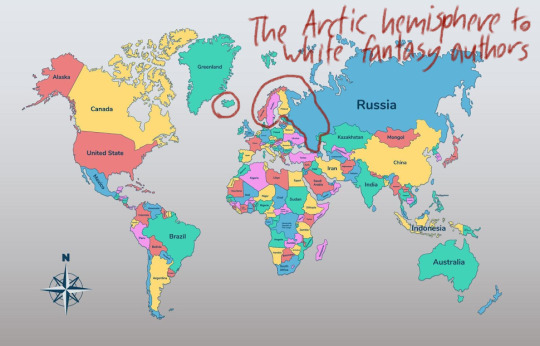
this is what the ACTUAL entire arctic hemisphere looks like in reality. that includes not just white european scandinavia but also all of northern russia including siberia which btw russia has MANY indigenous peoples, the sami people of norway, sweden, finland & russia, iceland which has no indigenous population but there are theories supported by genealogy & anthropology studies that indigenous peoples accompanied norsemen vikings to iceland, greenland which has the indigenous population of the greenlandic inuit before danish settlers came, canada which itself has MANY indigenous peoples & alaska which Also has MANY indigenous peoples including the inuit, several first nations communities & alaska natives.

so why is it that Every Single Fucking Blog i& see that has a northern/free folk character - whether canon or an original character - theyre literally Always white european coded, always having blonde hair with blue eyes if it's an original character "skin and hair as white as the snow and eyes as blue as the ice", all that shit. that's a rhetorical question. i& know why. you know why. it's because whiteness is considered the default in our lives & even in our stories & nonwhite arctic peoples or anywhere near the northern hemisphere are considered lesser than, considered an afterthought if even at all. bc y'all would rather have your perfect white instagram model northern characters rather than having diverse characters & actually doing & putting in the fucking work to incorporate nonwhite northern cultures into your fantasy stories despite claiming to be inclusive of everyone. to clarify, there's nothing inherently wrong with having white characters who live in the north but i& need y'all to ask yourselves Why its so overwhelmingly prevalent. bc as an INDIGENOUS mun it makes me& fucking insane.
"b-but a.rcana its in medieval europe!!!!!! :'CCCCC so of course the northerners are european northerners!!!!!" man you wont believe who lives in the arctic europe irl, it ain't white scandinavians, they aren't even indigenous to those lands, it's the sami & the karelians who're the indigenous peoples of arctic scandinavia & the kola peninsula. lmfao. now that's not to say there Aren't ANY people with blonde hair & blue eyes, but it's. really uncommon, even moreso people with red hair and blue eyes, especially historically speaking. the point of this post isn't even saying "there are no pale skinned people in the arctic so dont do that in fantasy", the point is "why are there ONLY white skinned, blue eyed, blonde haired people in fantasy arctic groups when the real arctic consists of so many more ethnic groups than that and why are there so many people just okay with indigenous erasure". the arctic is an extremely diverse place with THOUSANDS of ethnic groups in it & to keep writing & rping your character as all white characters especially if they're blonde is. extremely racist & its throwing aside indigenous folx & asians bc the arctic indigenous peoples look VERY diverse.
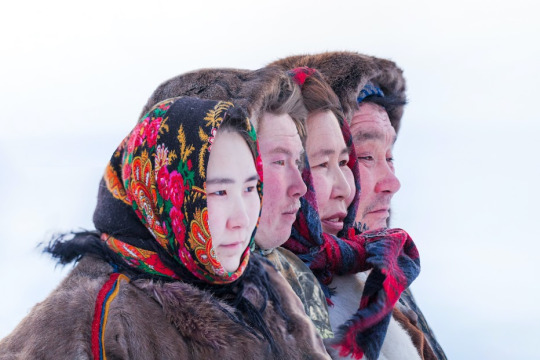

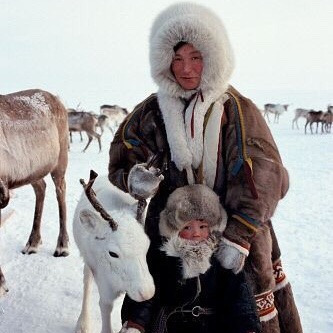



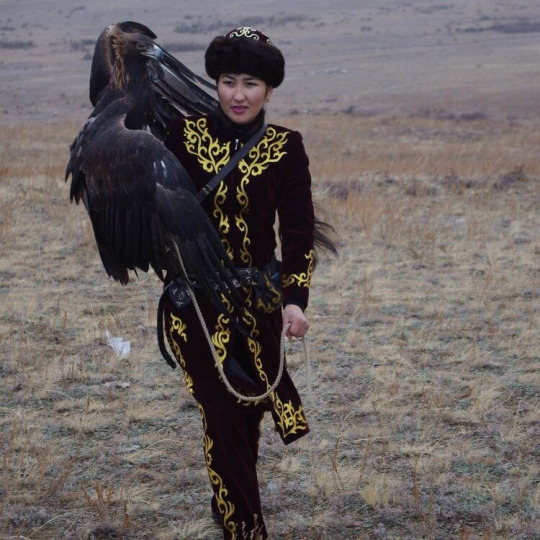

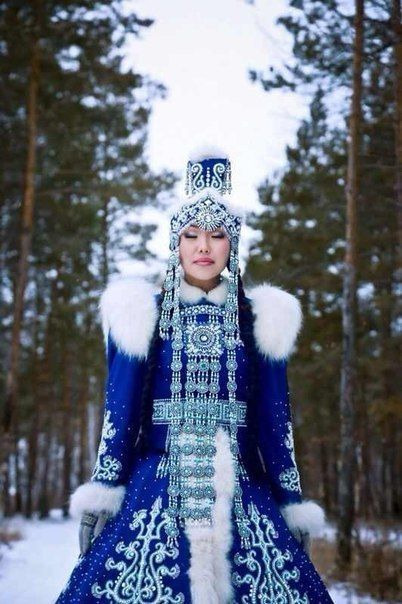



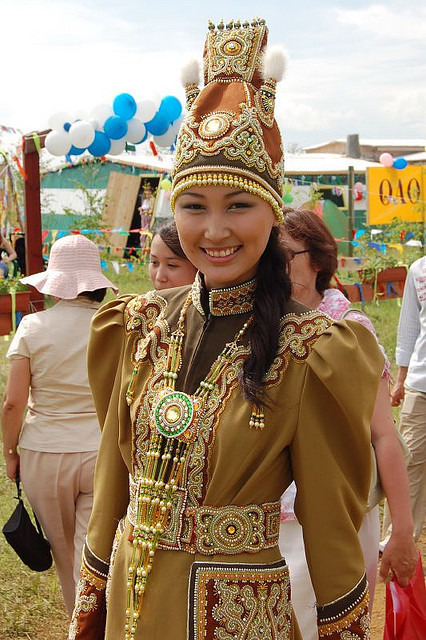


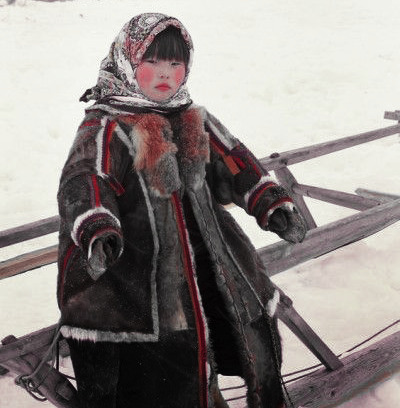

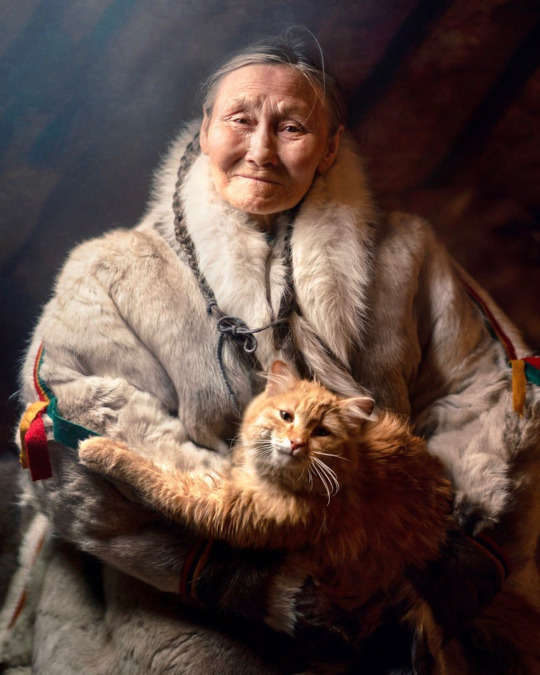


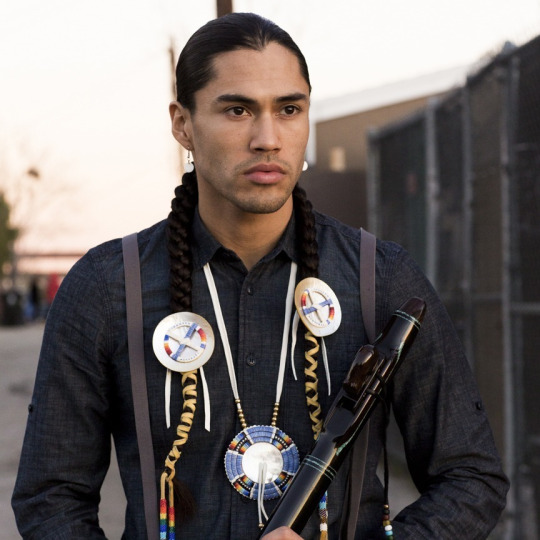

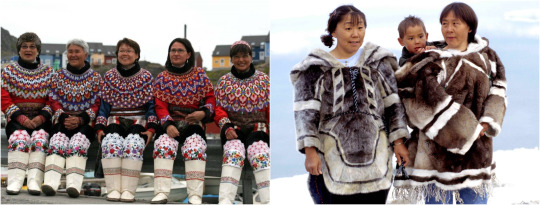



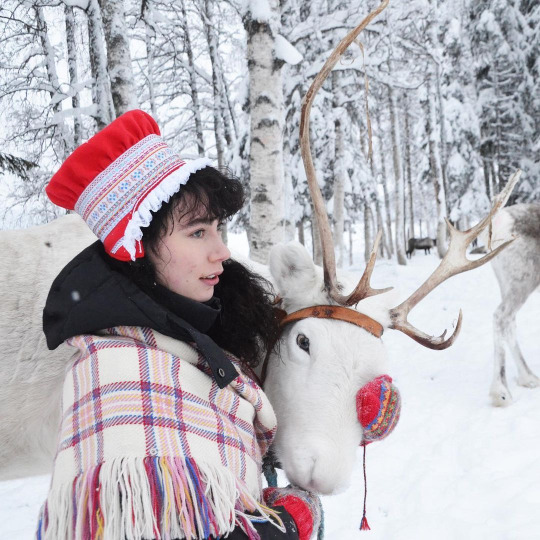
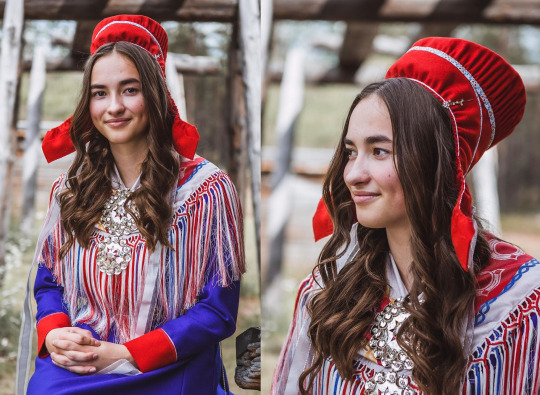
above are several different nations ranging from the sámi, to northern asia to indigenous peoples of siberia like the sakha to the tuvan to the chukchi to the nenets to the mongolians to alaska natives to the métis (basically, mixed white, mostly french, english & scottish settlers & indigenous people who're their own distinct indigenous people who, while not from there originally as their homelands are very diverse, historically also travelled up to the northwest territories) & several first nations in the subarctic region like the anishinaabe & cree. hopefully y'all now see what i& mean when there's literally SO MUCH DIVERSITY in the arctic, subarctic & otherwise northern regions in our world with a variety of different skintones from different shades of brown to pale & physical features & hair colors from brown to black to blonde & eye colors to choose from from shades of brown to blue to green. there's SO MANY ideas to choose from & y'all will STILL erase nonwhite peoples.
& that's just the first men in the NORTH (which are the place with the most people who're first men & btw the north is MASSIVE & that's not even including the MANY peoples from beyond the wall so combined they're canonically the largest & oldest of the seven kingdoms), there's technically other families such as house blackwood, house bracken & the now extinct house strong in the riverlands, house dayne, house wyl & house yronwood in dorne, house redfort & house royce in the vale, house westerling in the westerlands, house gardener in the reach, the mountain clans, & the people of crackclaw point claiming descent from the first men groups that could be interpreted as OTHER indigenous groups living in westeros before the andals (aka white european people) invaded & intermarried with the first men & the rhoynar came to dorne & later the valyrians, notably the targaryens, velaryons (who, in house of the dragon, are black) & celtigars (who i personally interpret as east asian, mostly han chinese, due to the yellow god-emperors of yi ti which is ancient china in the paternal line & a valyrian noblewoman who married him but that's besides the point) came to westeros. obviously there's no 1v1 comparison & most people in southern westeros are mixed between the andals & the first men according to grrm but y'all get it.
"but a.rcana!!!! grrm said its loosely inspired by the wars of the roses!!" .... ok and? asoiaf, like our world, still has many different peoples & cultures. using that as an excuse to not include characters of color in your writing in btw a fantasy series? ew. istg y'all will use any excuse to erase or ignore any nonwhite people even in the rpc.
"but a.rcana!!!! there's not very many indigenous fcs!!!" unfortunately that's very true but like. although it's great to have 1 you don't Need a fc do you. use your imagination.
i& can't tell you how angering it is to find that the vast majority of the rpc just. doesn't even entertain the idea of their favorite (yt) stark faves POSSIBLY being indigenous. if there can be black, brown & east asian valyrians there can be indigenous first men. just like the valyrians, there's literally ZERO lore saying that the first men exclusively had pale skin & btw their skintone, just like the native valyrians was literally NEVER described. yall wanna be racist & gatekeep fantasy SOOOOOOOOO fucking bad. please unpack & discard that white supremacist ideology bc science, history & nor fantasy or literally any other genre of literature & television is compatible with it.
g-d forbid j.on s.now be brown skinned & look visibly indigenous like his mother & uncle & being an indigenous man struggling to do the right thing in a world stacked against his cultural values & trying to save his people & the world from literal ice undead (which, by the way, as an indigenous mun in some of my nations we already HAVE creatures like the others, the giants & the children of the forest in our folklore, we don't need to make it up) & having an indigenous man being one of the major heroes of the story. g-d forbid everyone's favorite l.yanna s.tark be a visibly indigenous woman who's as skilled in the art of swordplay & embroidery & be named the queen of love & beauty & being taken from her home & having to mourn the loss of her father & brother who died trying to find their missing daughter / sister & depending on the verse dying in childbirth or living to become a woods witch & warrior & fighting in her nephew r.obb s.tark's army. g-d forbid r.obb s.tark who's white presenting be the noble prince turned warrior king who slaughtered every lannister soldier he saw for the capture then murder of his father & him struggling to do the right thing & trying to be what the king of the north should be, the first movement for indigenous independence in centuries since the targaryen dynasty fell & being tragically murdered. g-d forbid s.ansa s.tark be lightskinned & have red hair & blue eyes & still be the epitome & pinnacle of femininity beauty standards in king's landing who's considered just as beautiful as any white woman, struggle with the genocide of her people & be forced to use her wits & smarts in a place that didn't value honor or kindness & being used as a hostage by the very family who slaughtered her people & being viciously physically abused & sexually harassed by a white blonde haired green eyed tyrant boy king & his mother & no one blinked an eye & then being forced to marry another member of said family to the point of being bodily dragged to the sept & being forced to assimilate in order to survive & being oversexualized & objectified by white men & she's not even treated like an actual person & finally escaping & eventually taking her homeland back as queen of the north in her own right.
g-d forbid a.rya s.tark being brown skinned & being told she looks like her aunt l.yanna be genuinely angry at what happened to her people & learning about other people along the way & becoming a ruthless assassin for it & trying so hard to remove her culture from herself the further away from westeros she is but knowing deep down she'll always be a.rya s.tark & knowing that one day she'll avenge her family & her people. g-d forbid b.ran s.tark be white presenting & be a MORALLY COMPLEX PHYSICALLY DISABLED character who's literally just trying to save the world while being so far beyond the wall that everyone thinks he's dead & he & his (also indigenous) friends m.eera & j.ojen r.eed & hodor have to fight ice creatures & the undead. g-d forbid r.ickon s.tark who looks so much like r.obb being so young when all this happened & doesn't even remember what most of his family & own home looks like & all he knows is the (also indigenous) woman osha from beyond the wall who's his mother figure & his black direwolf shaggydog who's never abandoned him & he has to learn to fight & survive & thrive on the island of skagos where most don't even dare to tread bc of the supposed cannibalism & unicorns & him coming back to avenge his family as a fierce warrior even as a boy & arguably acting more like someone from the free folk than someone in the north.
g-d forbid indigenous men (rickard stark, brandon stark then eddard stark & robb stark) being brutalized & then murdered in front of crowds of cheering (mostly white) people & no one blinks an eye but ofc that doesn't mean anything (/s). g-d forbid the starks & the northmen are literally compared to literal animals & called savages doesn't mean anything race related despite the fact that savage is literally an antinative slur. g-d forbid the b.oltons (for the most part, not all of them ofc, its basically only r.oose & r.amsay) be indigenous villains bc there really aren't any native villains because we're always seen as the noble savage or these always good elf beings bc we're people just like anybody else & people can *GASP* do shitty things to each other & oppress their own people & native people aren't excluded from that. g-d forbid indigenous women being like the mormonts, dacey mormont & lyanna mormont & spearwives being strong & powerful native women & girls. g-d forbid w.yman m.anderly being a fat indigenous man be constantly underestimated by his peers but is actually a vital player in the northern restoration & his brave granddaughter green haired indigenous w.ylla m.anderly boldly standing up for the s.tarks even in front of the frey colonizers.
g-d forbid there be intracommunity issues between the northerners & the free folk bc like irl we clearly all got along so well (/s) like we didn't have enemies in the past & we had conflicts & fights like everybody else. g-d forbid there be indigenous people who look different & are just as diverse as dorne is. g-d forbid the north & dorne don't look at each other & find solidarity. g-d forbid the starks & northmen as indigenous peoples fighting to get their traditional homelands back from usurpers, traitors & colonizers to restore the north, castles, cultures & land back into indigenous hands.
#i'm& Very Tired#personals & fandom blogs do not interact i'll slaughter you on the spot kthx#''um ACKSHUALLY'' ion wanna hear it.#/ antinative racism#moots can reblog btw#ooc.
9 notes
·
View notes
Text
Warbler Showdown pt2; Bracket 2, Poll 4

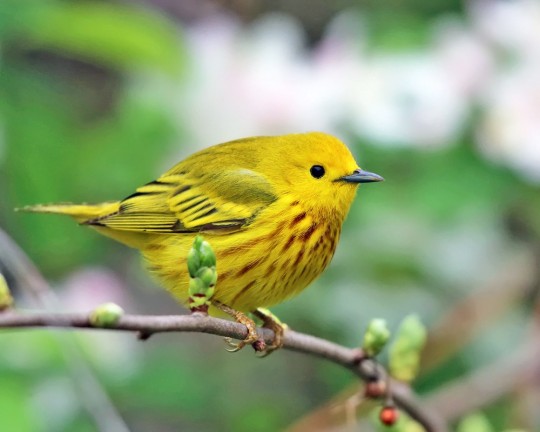
Blackpoll Warbler (Setophaga striata)
IUCN Rating: Near Threatened
Range: breeds in Northern Canada and Alaska and overwinters in Brazil - for note, this makes their migration the longest for any member of Parulidae.
Habitat: in Canada, found in boreal black spruce and tamarack forests. Much less picky when overwintering, found in many different wooded habitats (deciduous, rain, cloud, mangrove, and gallery forests), as well as forest edges, second growth, and coffee plantations.
Subspecies: none
Yellow Warbler (Setophaga petechia)
IUCN Rating: Least Concern
Range: almost the entire continent of North America, save the locals of Nunavut, northern Quebec, and Greenland. Only migrates through the southern US states, and overwinters from southern Mexico all the way to Northern Brazil.
Habitat: breeds in wet, deciduous thicket, especially those with willows. While overwintering, uses a variety of wooded and scrubby habitats, as well as mangroves.
Subspecies: 9*; Mangrove Warbler could be split out as its own species
Image Sources: BLPW (Simon Boivin); YEWA (Tom Murray)
24 notes
·
View notes
Text



LETTERS FROM AN AMERICAN
December 26, 2024
Heather Cox Richardson
Dec 26, 2024
It is starting to seem like the best way to interpret social media posts from President-elect Donald Trump is through the lens of professional wrestling. Never a true athletic competition—although it certainly required athletic training—until the 1980s, professional wrestling depended on “kayfabe,” the shared agreement among audience and actors that they would pretend the carefully constructed script and act were real.
But as Abraham Josephine Reisman explained in the New York Times last year, Vince and Linda McMahon pushed to move professional wrestling into entertainment to avoid health regulations and the taxes imposed on actual sporting events. That shift damaged the profession until in the mid-1990s, wrestlers and promoters began to mix the fake world of wrestling with reality, bringing real-life tensions to the ring in what might or might not have been real. “Suddenly,” Reisman wrote, “the fun of the match had everything to do with decoding it.”
Nothing was off-limits, and the more outrageous the storylines, the better. “[F]ans would give it their full attention because they couldn’t always figure out if what they were seeing was real or not.” This “neokayfabe” “rests on a slippery, ever-wobbling jumble of truths, half-truths, and outright falsehoods, all delivered with the utmost passion and commitment.”
Reisman concluded that producers and consumers of neokayfabe “tend to lose the ability to distinguish between what’s real and what isn’t.” In that, they echo the world identified by German-American historian and philosopher Hannah Arendt in her 1951 The Origins of Totalitarianism. “The ideal subject of totalitarian rule is not the convinced Nazi or the convinced Communist,” she wrote, “but people for whom the distinction between fact and fiction…and the distinction between true and false no longer exist.”
Yesterday, on Christmas and the first night of Hanukkah, Trump posted a “Merry Christmas to all” message that went on to claim falsely that Chinese soldiers are operating the Panama Canal, that President Joe Biden “has absolutely no idea what he’s doing.” The heart of his message, though, was that the U.S. should take over both the Panama Canal and Canada, and that Greenland, which is a self-governing territory of Denmark, “is needed by the United States for National Security purposes,” and that “the people of Greenland…want the U.S. to be there, and we will!”
Trump’s sudden pronouncements threatening three other countries—he has been quiet about Mexico since its president pushed back on his early threats—have media outlets scrambling to explain what he’s up to. They have explained that this might be a way for him to demonstrate that his “America First” ideology, which has always embraced isolation, will actually wield power against other countries; or suggested that his claim against Panama is part of a strategy to counter China; or pointed out that global warming has sparked competition to gain an advantage in the Arctic.
The new focus on threatening other countries, virtually never mentioned during the 2024 campaign, has driven out of the news Trump’s actual campaign promise. Trump ran on the promise that he would lower prices, especially of groceries. Yet in mid-December he suggested in an interview with Time magazine that he doesn’t really expect to lower prices. That promise seems to have been part of a performance to attract voters, abandoned now with a new performance that may or may not be real.
There is also little coverage of the larger implications of Trump’s threats to invade other countries. Central to the rules-based international order constructed in the decades after World War II is that countries must respect each other’s sovereignty. Between 1942 and 1945, forty-seven nations signed the Declaration by United Nations, the treaty that formalized the alliance that stood against the fascist Axis powers. That treaty declared the different countries would not sign separate peace agreements with Germany, Italy, or Japan.
They would work together to create a world based on the 1941 Atlantic Charter, which called for the territorial integrity of nations and the restoration of self-government to countries where it had been lost, and for global cooperation for economic and social progress. In 1945, delegates from fifty nations met in San Francisco to establish a permanent forum for international cooperation.
What emerged was the United Nations, whose charter states that the organization is designed “to maintain international peace and security” by working together to stop “acts of aggression or other breaches of the peace,” and to settle international disputes without resort to war. “The Organization is based on the principle of sovereign equality of all its Members,” the charter reads. “All members shall refrain…from the threat or use of force against the territorial integrity or political independence of any state, or in any other manner inconsistent with the Purposes of the United Nations,” it reads.
Russian president Vladimir Putin is eager to tear down the international rules-based order established by the United Nations and protected by organizations like the North Atlantic Treaty Organization (NATO). His invasion of neighboring countries—Georgia in 2008, then Ukraine in 2014 and again in 2022—demonstrates his desire to return the world to a time in which bigger countries could gobble up smaller ones, the ideology that after the invention of modern weaponry meant world wars.
On Christmas Day, Russia fired more than 70 missiles and more than 100 drones at Ukraine, targeting its energy infrastructure. The Ukrainian forces shot down more than 50 of the missiles, but the attack damaged power plants, cutting electricity to different regions. Just two years ago, Ukraine began to celebrate Christmas on December 25, following the Gregorian calendar rather than the less accurate Julian calendar still favored by the Russian Orthodox Church for religious holidays. Ukraine president Volodymyr Zelensky said the change would allow Ukrainians to “abandon the Russian heritage” of celebrating Christmas in January.
Also yesterday, an undersea power cable connecting Finland and Estonia failed, following a series of cuts to telecommunications cables in the Baltic Sea in November. Today, Finland seized an oil tanker it believes cut the cables yesterday, noting that the tanker may be part of Russia's “shadow fleet” that is waging a shadow campaign against NATO nations at the same time that it is evading sanctions against Russia.
In a joint statement today, the European Commission, which is the government of the European Union, “strongly condemn[ed]” the attacks on Europe’s critical infrastructure and said it would be proposing further sanctions to target the Russia’s shadow fleet, “which threatens security and the environment, while funding Russia’s war budget.” It emphasized Europe’s commitment to international cooperation.
Also yesterday, an Azerbaijan Airlines jet traveling from the Azerbaijan capital of Baku on its way to Chechnya crashed near Aktau, Kazakhstan, killing at least 38 of the 67 people on board. Nailia Bagirova and Gleb Stolyarov of Reuters reported today that a preliminary investigation by Azerbaijan officials suggests that Russian air defenses shot the plane down.
Newsweek’s Maya Mehrara reported that on Russian media last night, a propagandist close to Putin cheered on Trump’s demand for Greenland. "This is especially interesting because it drives a wedge between him and Europe, it undermines the world architecture, and opens up certain opportunities for our foreign policy," nationalist political scientist Sergey Mikheyev said.
Mikheyev supports Russia’s attempt to conquer Ukraine and has called for Russia to add to its “empire” not only Finland and Poland, but also Alaska, Hawaii, and California. Last night he explained that Trump’s approach would undermine the rules-based order that has shaped the world since World War II. If Trump "really wants to stop the third world war,” he said, “the way out is simple: dividing up the world into spheres of influence."
Mehrara noted that academic Stanislav Tkachenko said that Russia should "thank Donald Trump, who is teaching us a new diplomatic language.” He continued: "That is, to say it like it is. Maybe we won't carve up the world like an apple, but we can certainly outline the parts of the world where our interests cannot be questioned.”
But yesterday in Georgia’s capital, Tbilisi, Armenians and Azerbaijanis joined the protesters who are filling the streets to protest the government’s attempt to tie Georgia more closely to Putin’s Russia. They hope to turn Georgia toward Europe instead.
And President Joe Biden issued a statement concerning Russia’s Christmas bombardment of Ukraine to cut heat and electricity for Ukrainians in the dead of winter. “Let me be clear,” he said, “the Ukrainian people deserve to live in peace and safety, and the United States and the international community must continue to stand with Ukraine until it triumphs over Russia’s aggression.”
LETTERS FROM AN AMERICAN
HEATHER COX RICHARDSON
#letters from an american#heather cox richardson#Vince and Linda McMahon#circus#kayfabe#truth and lies#Hannah Arendt#totalitarianism#illusion#Ukraine#war by other means
6 notes
·
View notes
Note
It seems like your and Greenland's culture and language is pretty similar, is that so? Correct me if I'm wrong, please. Anyway what are your relationship?
Yes! So I am apart of the Iñupiat, which are a group from Northwestern Alaska and parts of Canada. We fall into the Inuit culture which is an umbrella term for the Inuit, Inupiat, and Alaska Natives. Greenlanders or Kalaallit are "cousins" essentially, our languages are different though very similar and we share a similar culture though there are some differences of course. My language of Iñupiaq is closer to the Greenlandic dialects rather than the Yupik dialects however.
As for Greenland, I'd like to say we are very close! We both are preserving our heritage and due to a shared culture get along really well, it's always fun to meet up especially for dinner as we get so share our takes on the classics!
#hetalia#annika speaks#annika asks#hetalia alaska#hetalia states#aph#hetalia oc#hws#hws alaska#hws states
5 notes
·
View notes